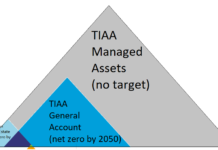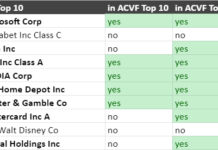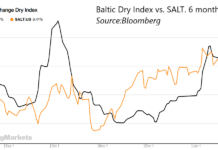If you’re going to have someone else manage your money, consider their incentives carefully.
I just finished reading Micheal Lewis’s excellent book The Big Short: Inside the Doomsday Machine on the Wall Street’s role in the subprime mortgage meltdown and the few investors who saw it coming.


I began with a low opinion of the effectiveness of the vast majority fund managers and advisors who manage other people’s money for a living, but the the highly-paid gross negligence and/or incompetence of the people running the CDO operations of the big Wall Street banks in the years leading up to the crisis shocked me anyway. I may be cynical, but perhaps not cynical enough.
Incentives and the Crisis
Micheal Lewis makes the case that these people behaved the way they did because of their incentives. In the concluding chapter he writes:
Greed on Wall St. was a givenalmost an obligation. The problem was the system of incentives that channeled the greed.
The few foresighted people Micheal Lewis writes about who shorted Collateralized Debt Obligations (CDOs) based on subprime mortgages made tens of millions of dollars for themselves, but the people who took the much larger long side of the bet also made (and were allowed to keep) tens or even hundreds of millions for themselves, even after their companies went bankrupt or were bailed out by the government. Many are still running those same companies, and still being paid tens of millions of dollars to do so. Back to Micheal Lewis:
What are the odds that people will make smart decisions about money if they don’t need to make smart decisionsif they can get rich making dumb decisions? The incentives on Wall Street were all wrong; they’re still all wrong.
The financial reform package tries to address a few of these perverse incentives. Unfortunately, any benefits of the package are likely to be short lived. Rather than addressing the underlying structure of compensation and incentives for financial professionals, the reform bill attempts to micromanage a few details. This may prevent the same problems from recurring in exactly the same way, but the great complexity of the bill makes it inevitable that perverse incentives will remain; they will just be different from the old ones, and lead to financial crises which appear different.
The People Managing Your Money
Perverse incentives may underlie financial crises, but their damage is not limited to a few spectacular banking implosions. They can also cause slow, steady drains on investment returns that are so common that most people assume they are normal, and don’t even notice their effects.
Last month, I was hiking with an angel investor who had just read The Big Short. He came away from the book feeling that the market is rigged against the small investor. I agreed with him, and asked what he was doing with the part of his portfolio that wasn’t in his private Angel deals. He told me it was being managed by an advisor at a large Wall Street bank, and he seemed comfortable with that. I was shocked, but I should not have been.
How could a relatively sophisticated investor, who does not trust Wall Street banks, use those very same banks to manage his money?
To answer my question, we first should try to understand the investing landscape open to small investors. They have two choices to make. First, they can try to beat the market, or adopt a passive investing strategy. In this context, I am using a passive investing strategy to refer to portfolio allocation. Within any possible portfolio allocation, it is possible to use a passive or active approach to stock selection, but for the purpose of simplicity, I will focus on passive vs. active asset allocation only.
A passive allocation will be the same regardless of market conditions; it depends only on the investor’s needs. An active allocation strategy considers the investor’s needs, but also takes into account market conditions.
With a passive investing approach, portfolio selection involves choosing a sector selection to match the investors risk profile. The use of a questionnaire and the ability to use simple software is enough to come up with an appropriate assets allocation. Given the ease of designing passive portfolios, a passive investor should focus on keeping fees and expenses as low as possible. An individual investor can find an appropriate allocation by using free web based software offered by most mutual fund families and discount brokers, or by paying an advisor to do the same. Since most advisors charge 1% to 2% of Assets Under Management (AUM) annually, or will place the client in equally expensive mutual funds if they are paid by commission, the clear choice for a passive investor is to avoid the advisors, and use the least expensive index funds available.
Incentives Again: Why Most Advisors Advocate a Passive Approach to Asset Allocation
If passive investors should avoid advisors, do most advisors focus on active investing approaches? They don’t. Most advisors will provide an investor with a passive portfolio allocation, and will in fact believe that this is the best choice for their clients. While I believe this is far from the best approach for their clients, there would be a lot less employed advisors if most people agreed with me. In other words, advisors’ belief about the best way to manage money has more to do with advisors incentives than their client’s best interest.
Consider the incentives shaping most investment advice. For a start, SEC rules prohibit investment advisors and mutual funds from charging performance based fees, with only a few exemptions for rich or sophisticated clients. If advisors could charge performance based fees, they would probably focus on performance: if the investor made money, the advisor would make money; if the investor lost money, so would the advisor.
In practice, most fees are a percentage of Assets Under Management (AUM) (“fee-based”), or based on commissions (again a percentage of assets invested) for mutual fund transactions.
Commission based advisors are the lowest rung, and are generally only the best choice for those with small portfolios. Their incentives often lead them to place investors in high-fee mutual funds, and trade far to frequently. The incentives of fee-only advisors with flat fees
or fees based on a percentage of assets under management are just less bad, rather than good. First of all, it’s mathematically impossible for the average advisor to produce above average performance on a consistent basis. And even the few who can produce above average performance have great difficulty demonstrating that ability, since it’s near impossible to distinguish investment skill from a long run of good luck. This is why mutual fund disclosures always have to include the phrase “past performance is no guarantee of future results.”
“Model” is a Fancy Word for “Excuse”
Both fee and commission based advisors can increase their income more by acquiring new clients than by working hard to achieve a percentage or two more of extra return for existing clients. So most advisors focus on attracting new clients, while working to persuade them that active portfolio management is either unnecessary or does not work. Modern Portfolio Theory (MPT) is both the tool for passive portfolio allocation, and the theory used to back up the arguments that active portfolio allocation does not work.
MPT is an asset allocation model that has three very attractive characteristics to your average investment advisor who is more interested in gathering AUM than achieving good returns.
- MPT sounds impressive and scientific. The very name tells us it’s “Modern.” “Theory” sounds very scientific. How many advisors do you know who choose to use the more sophisticated and accurate Arbitrage Pricing Theory (of which MPT is a special case) instead? I’ll wager the answer is “none,” and I think a large part of the reason is that the word “Modern” is more attractive to the general public than the word “Arbitrage.”
- MPT relies on the assumption that markets are efficient. The consequence of the efficient markets assumption is that no one can beat the market on a risk-adjusted basis, and so this leads to the conclusion that the best investing approach is a passive approach. This is a very convenient assumption if you are an advisor with a mediocre track record trying to persuade a prospective or current client not to look for someone better. The main problem with the efficient markets assumption is that it’s completely contrary to the evidence. If markets were efficient, Micheal Lewis wouldn’t have had anyone to write about in The Big Short, and no one would have ever heard of Warren Buffet. In fact, if markets were efficient, we would not have had the financial crisis in the first place, because CDOs would have traded for a fraction of the price they did in reality, and lenders would not have had incentives to make $750,000 mortgage loans to California strawberry pickers (an actual example from the book.)
- MPT is easy to use. While understanding the intricacies (and flaws) of MPT is beyond your average investment advisor, readily available software makes it very easy to implement: just interview the client to determine his or her risk tolerance and return requirements, and Voila! out pops a portfolio. This leaves the investment advisor plenty of time to go about the business he is actually paid to do: finding more clients.
- Regulation leads to conservatism. In a regulated industry, where every security in a client’s portfolio has to be “appropriate,” it’s very convenient to have a widely accepted model to measure what is “appropriate.” The more widely accepted the model the easier it is to argue that it produces results that are appropriate to each client. This is also about incentives: if an advisor is being audited by the SEC or his state regulator, they’re very likely to ask if the advisor is recommending appropriate securities to clients. They’re not at all likely to ask if the advisor is actually making money for those same clients. The stock of a large, well-regarded bank like Citigroup (C) would have probably been considered appropriate for a conservative investor at the start of 2008, while a speculative put betting the same stock would fall 50% by the end of the year would generally not be considered appropriate. But Citigroup started 2008 at $30, and was down to $8 a year later. The appropriate, conservative investment would have been down almost 75%, while the inappropriate, “risky” investment would have been up something like 600%. While it’s certainly possible to defend a long put as an appropriate part of a conservative portfolio, it takes real thought and work. The path of least resistance is to do what everyone else is doing, and use MPT to explain the mediocre returns that result.
In other words, Modern Portfolio theory is a pretty-sounding excuse that provides mediocre investment advisors reasons not to do the very difficult work of trying to outperform the market. In a sense, it’s a lot like the models described by Micheal Lewis used by the rating agencies Standard & Poors and Moodys to rate CDO tranches when they did not even have all the data that would be needed to perform an accurate assessment of the riskiness of the underlying loans. Traders at the big Wall Street banks knew the weaknesses of the rating agencies’ models far better than the people who used them, and they gamed them to get investment grade ratings on CDOs which would end up being worthless. Because these CDOs were highly rated, nearly everyone felt safe buying them, including many traders at the same banks which were gaming the rating agencies’ models in the first place.
Using a Passive Investing Approach
That brings us back to the money-management options for a small investor. Above, I made the case that unless you’re going to try to beat the market, you should avoid investment advisors. The self directed investor can replicate the results of the risk-adjusted passive portfolio allocation approach using free, widely available, portfolio analysis tools. You can get yourself a MPT-based portfolio by using any of the portfolio analyzers on discount broker or mutual fund websites, and not have to pay for it. You don’t have to understand MPT to use it. MPT’s very good at producing average results, with tweaks to make your portfolio appropriate to your risk tolerance and investment goals. I use Charles Schwab for most of my trading, and I’ve looked at their “Portfolio Analysis Tool” (sorry, the link only works if you are logged in to a Schwab account) and it will give you the same sorts of results you will get from your standard MPT-dependent investment advisor, without the hand-holding or the fees.
Attempting to Beat the Market
An investor who wants to beat the market has two options: attempt to do it himself, or find an investment advisor who has the skill to do it for him.
Managing your own money in an attempt to outperform the market requires the most time, effort and skill. I only advise it to people who are willing to and interested in spending a great deal of time and effort learning the necessary skills. To successfully manage your own money, you’ll need to find a mix of investing and analysis skills suited to your aptitude and emotional make-up. Far more people try than succeed.
Finding a Skilled Investm
ent Advisor
If you want to take an active approach, but have decided that you don’t have the time or dedication to invest your own money, you should look for a skilled advisor. This will take considerable time and dedication, but it can be done, and if you do it right, you’ll only have to do it once, while active investing is a never-ending process.
Here is how I would go about finding a skilled advisor: I’d begin with a process of elimination. I’d want someone who at least attempts to analyze the market or securities he’s investing in, and not just run them through a widely accepted model. The main purpose of market models is not to produce superior returns, it’s CYA for money managers.
If an advisor utters any of the phrases “Modern Portfolio Theory,” or “Efficient Markets” with anything other than derision, I’d leave immediately. These are signs that the advisor prefers a passive investing approach. The rare advisors who follow active approaches do exist, despite the incentives. I’ve met a few, although they have been far between. But finding an advisor who does real analysis is just the first step. Next, you must determine if he or she is any good at it.
Looking at the advisor’s track record is unlikely to help distinguish luck (good or bad) from skill. Probably the smartest investment manager profiled in The Big Short was Mike Burry, and he suffered three years of negative performance from 2005 to 2007, right before he made incredible sums of money in 2008.
The only way I know to decide if an analyst is any good is to understand his or her methods. Here are some positive signs I would look for:
- Does he or she knows more than 99% of other investors about his or her specialty, without being reliant on some model from a third party. In-house models are potentially okay, but I’d want to talk to the person who invented the model, and make sure they have an edge over all the other model-makers.
- Has the advisor often been wrong before being right? Ask the advisor to give an example of a time when they took a position, based on their analysis, that was contrary to market consensus and the position moved against them for an extended period. If the position has since paid off spectacularly, you might have found a Mike Burry. If the position is still moving against him, you may have found something even more valuable: you may have found a Mike Burry in 2007, right before his gigantic bet against the mortgage market paid off.
Neither of these is a guarantee of competence. Rather, I’m saying that knowledge is a much better sign of competence than ignorance, and always following the herd is another way to produce average results. The reason to ask about trades that started off bad is to test if the trade was lucky, or based on astute analysis. It’s much easier to spot a profit opportunity than it is to predict when that opportunity will pay off. Mike Burry got into his CDO bet three years too early because he could not believe that other investors would not soon be piling in to the same bets as the ones he was in, pushing the price up. Investors who get into a position too early but are ready and able to stick with it still make money. Investors who get in too late don’t.
Final Thoughts
Will it be easy for you to trust your money to an advisor who speaks candidly about times the market has moved against him? It almost certainly won’t be. That is why such advisors are few and far between: despite their skill, they often have trouble gathering and keeping assets under management. Mike Burry was particularly bad at handling people: he so annoyed his investors during his down period from 2005 to 2007 that nearly all of them abandoned him as soon as they could, even though he had just produced gigantic returns as the market imploded on nearly everyone else.
None of the three options I recommend is without flaws. Managing your own money using a passive approach will produce average results. Managing your own money with an active approach can be very risky, and takes more time, effort, and skill than most people have. Finding a skilled active money manager is a good deal of work because there aren’t very many of them, and it’s often difficult to distinguish skill from luck.
Given these unpalatable options, many people who read this article will probably ignore my advice and decide to work with an MPT-touting investment advisor anyway. To those who are tempted to do so, I ask: “What are your incentives? Are you more interested in avoiding putting in effort today, or in achieving your investment goals?”
DISCLOSURE: None.
DISCLAIMER: The information and trades provided here are for informational purposes only and are not a solicitation to buy or sell any of these securities. Investing involves substantial risk and you should evaluate your own risk levels before you make any investment. Past results are not an indication of future performance. Please take the time to read the full disclaimer here.








